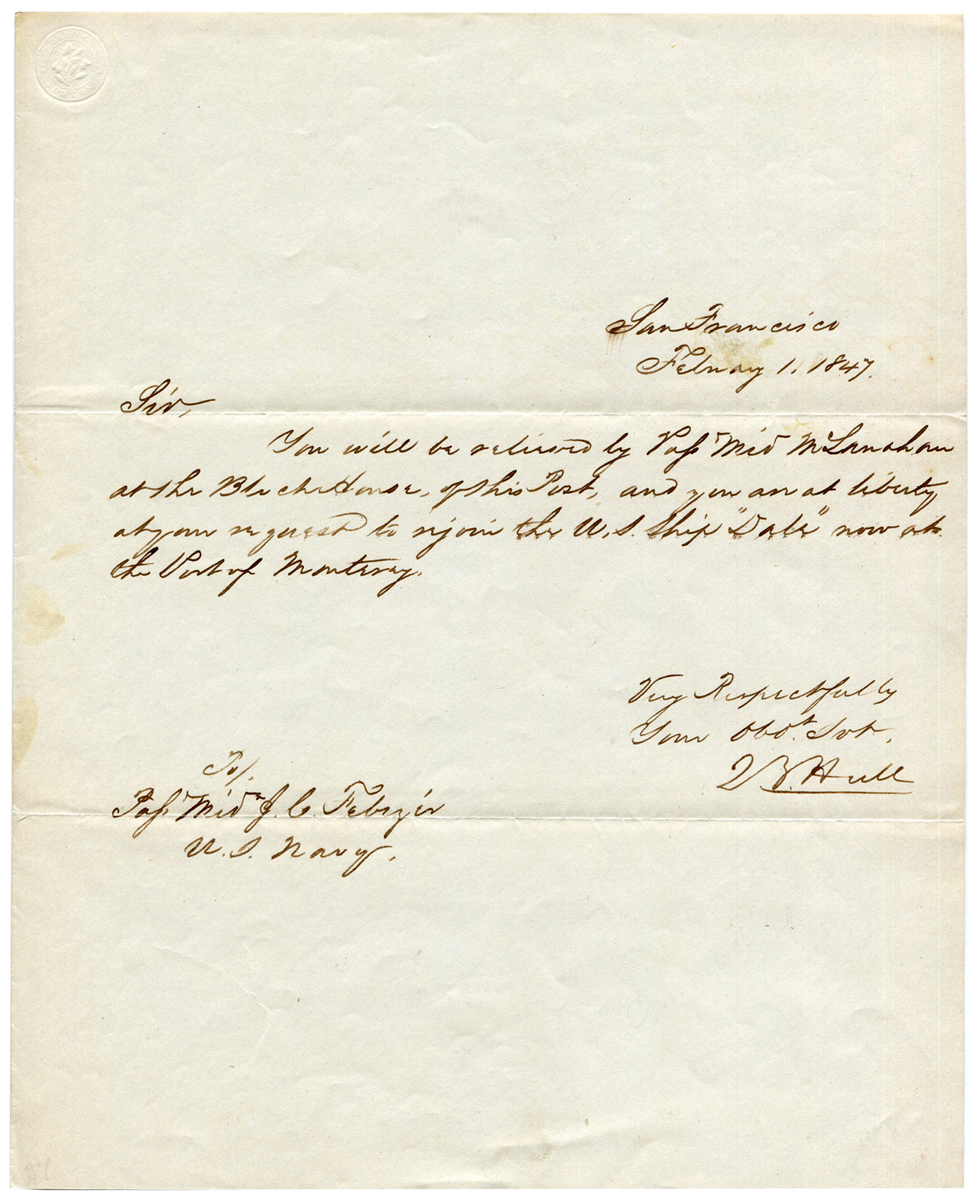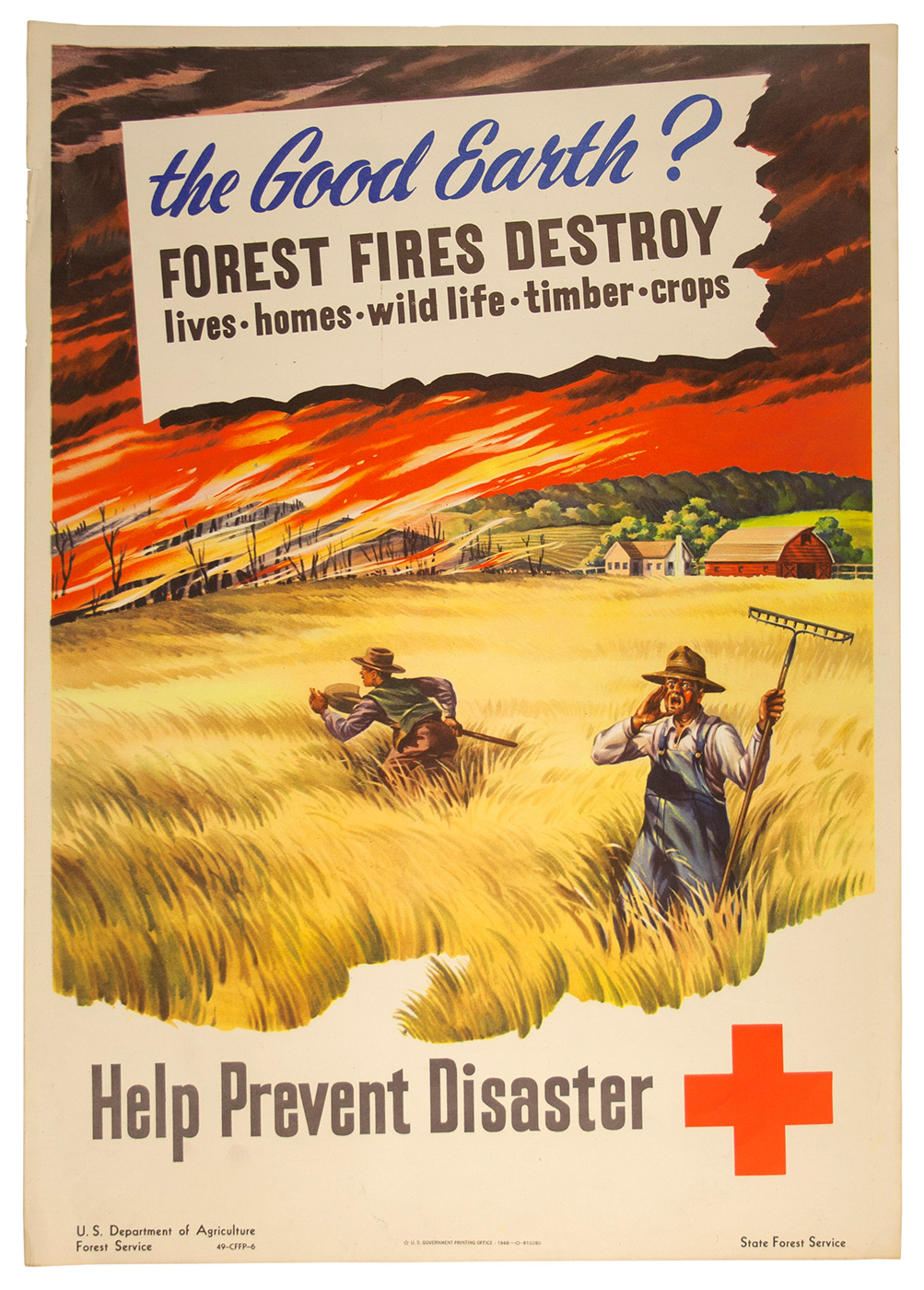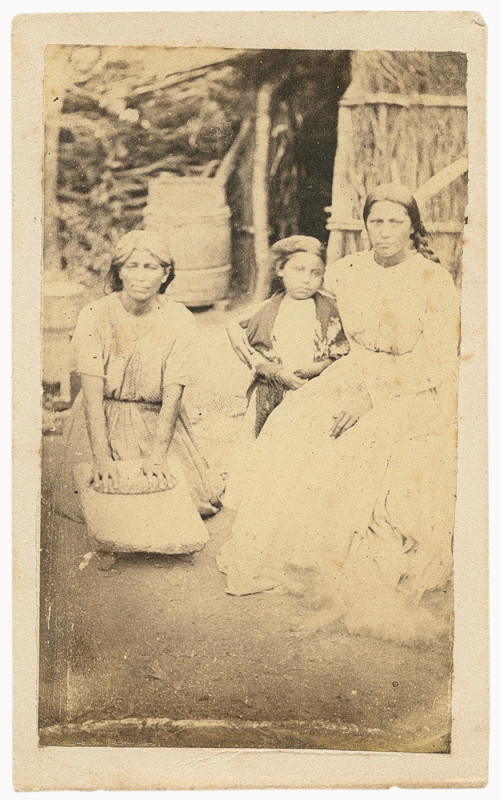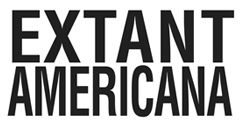Following his brother’s ‘accidental’ capture of Monterey, Alta California in 1842, Roger ap Catesby Jones, calls his critics “lyers” and regrets “that he should have pounced upon Terra firma…a Commander had better be an inch forward of the mark, than a hair breadth behind it…”
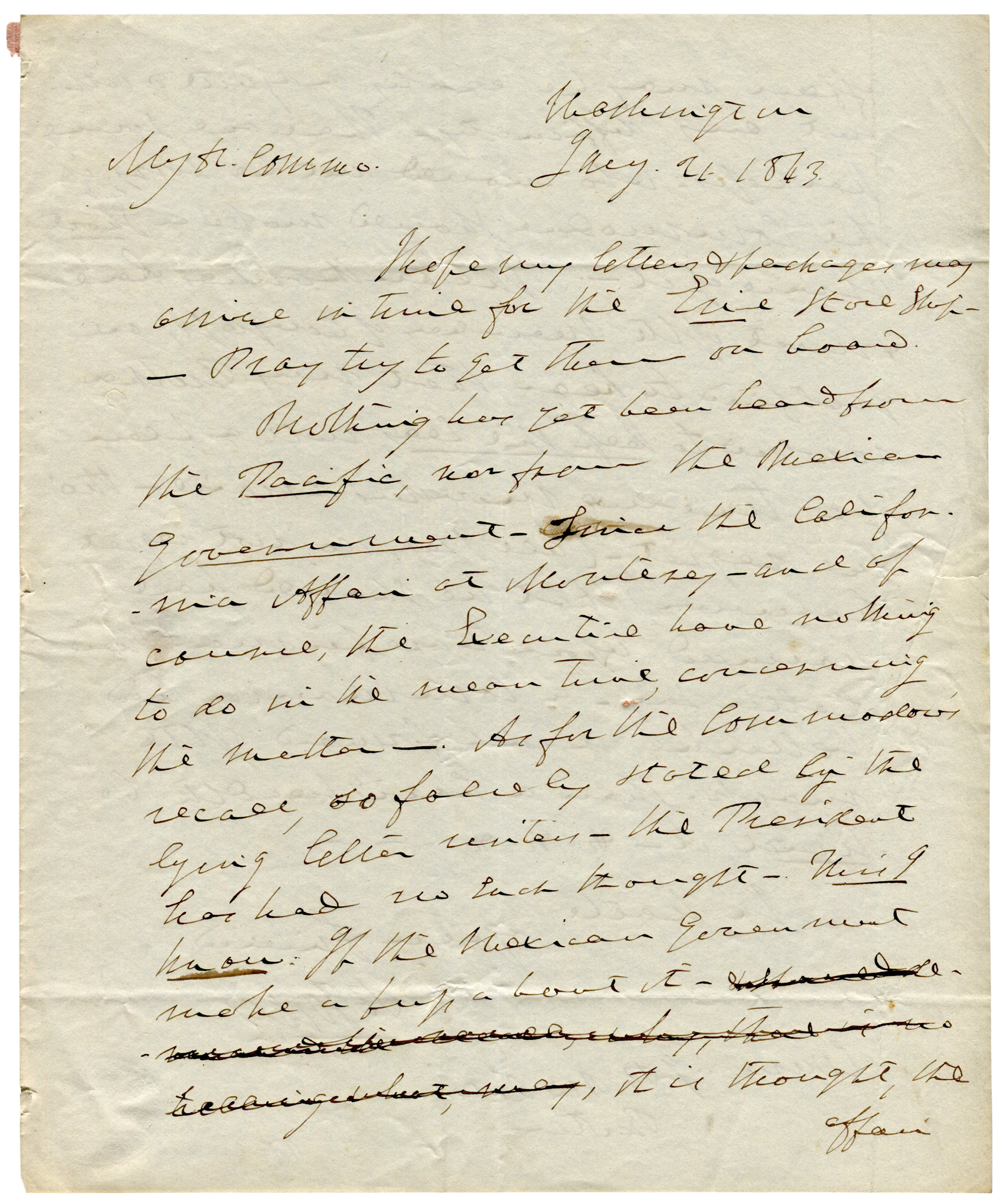 (Alta California) Roger ap Catesby JONES (1789-1852) Fine content Autograph Letter Signed “R. Jones” as Adjutant General, 2pp., 243 x 200 mm. (9 5/8 x 8 in.), Washington, 26 July 1843, franked on the integral address leaf, “R. Jones Ajt Genl” and addressed in his hand on the integral address leaf to ” Commodore J.B. Nicholson commanding the Naval Station at Charlesto[w]n, Massachusetts-“, and stamped ‘FREE‘ in red, awaiting word from the Mexican government regarding the 1842 accidental invasion of Mexico and one-day capture of Monterey orchestrated by his brother, Commodore Thomas ap Catesby Jones, in full: “Hope my letters & packages may arrive in time for the Erie Store Ship— Pray try on get them on board. Nothing has yet been heard from the Pacific, nor from the Mexican Government— Since the California Affair at Monterey— and of course, the Executive have nothing to do in the mean time concerning the matter—. As for the Commodore’s recall, so falsely stated by the lying letter written— the President has had no such thought— This I know: If the Mexican Government make a fuss about it, it is thought, the affair may be easily adjust[e]d without any difficulty—. There are some perhaps, who would not be sorry, if the Commodore should make a Short cruise of it—. The authorities have, & most of the members of Congress, are gratified to hear that my Brother resolved to keep the Seas, with a plan of a twelve months’ cruise — tho’ we regret— (all I see, do not regret however) that he should have pounced upon Terra firma. Those Catier[?] Say— a Commander had better be an inch forward of the mark, than a hair breadth behind it—. &c. &c. &c.”
(Alta California) Roger ap Catesby JONES (1789-1852) Fine content Autograph Letter Signed “R. Jones” as Adjutant General, 2pp., 243 x 200 mm. (9 5/8 x 8 in.), Washington, 26 July 1843, franked on the integral address leaf, “R. Jones Ajt Genl” and addressed in his hand on the integral address leaf to ” Commodore J.B. Nicholson commanding the Naval Station at Charlesto[w]n, Massachusetts-“, and stamped ‘FREE‘ in red, awaiting word from the Mexican government regarding the 1842 accidental invasion of Mexico and one-day capture of Monterey orchestrated by his brother, Commodore Thomas ap Catesby Jones, in full: “Hope my letters & packages may arrive in time for the Erie Store Ship— Pray try on get them on board. Nothing has yet been heard from the Pacific, nor from the Mexican Government— Since the California Affair at Monterey— and of course, the Executive have nothing to do in the mean time concerning the matter—. As for the Commodore’s recall, so falsely stated by the lying letter written— the President has had no such thought— This I know: If the Mexican Government make a fuss about it, it is thought, the affair may be easily adjust[e]d without any difficulty—. There are some perhaps, who would not be sorry, if the Commodore should make a Short cruise of it—. The authorities have, & most of the members of Congress, are gratified to hear that my Brother resolved to keep the Seas, with a plan of a twelve months’ cruise — tho’ we regret— (all I see, do not regret however) that he should have pounced upon Terra firma. Those Catier[?] Say— a Commander had better be an inch forward of the mark, than a hair breadth behind it—. &c. &c. &c.”
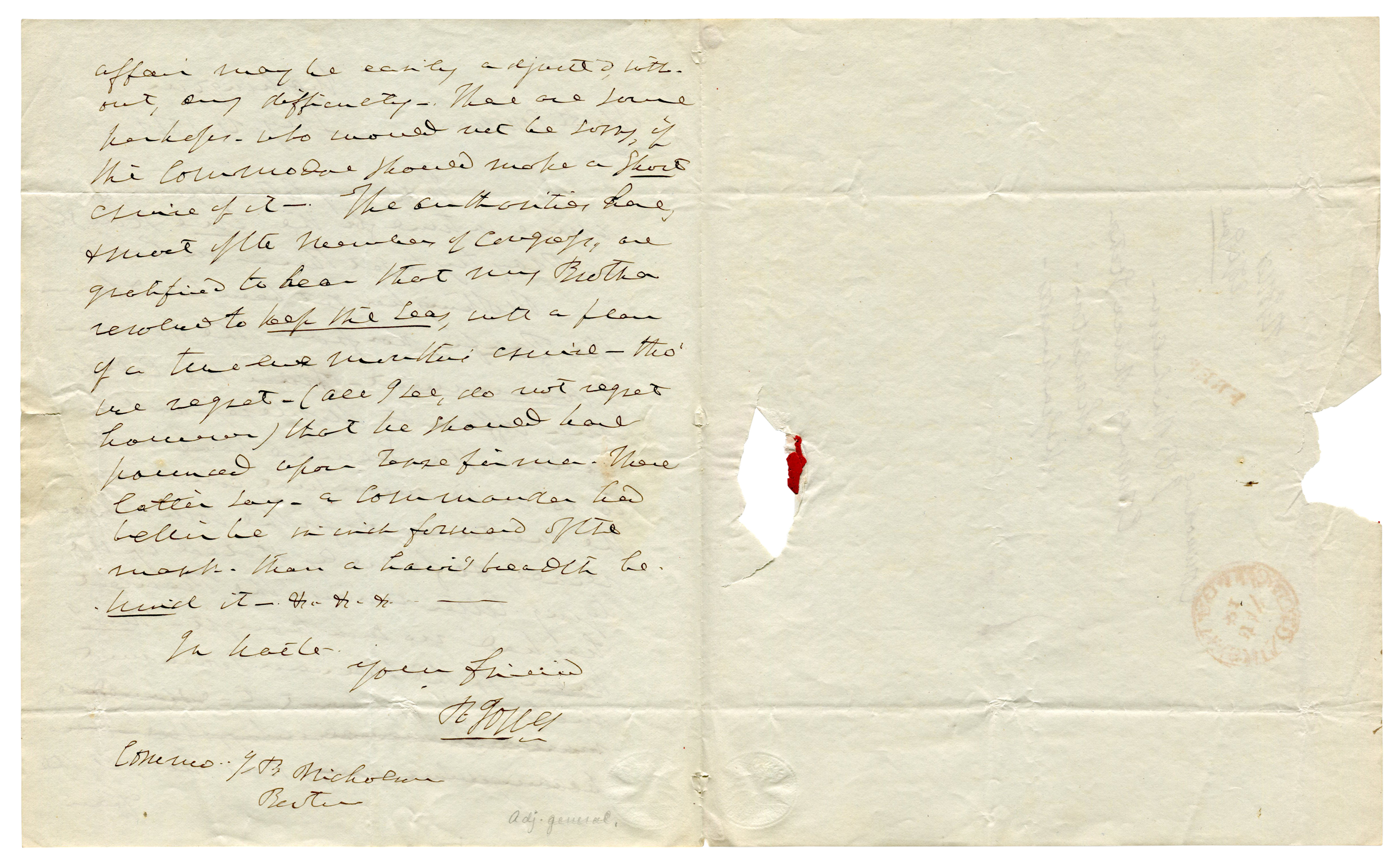 Jones’ brother, Commodore Thomas ap Catesby Jones (1790-1858) was a decorated but controversial U.S. naval officer best known for his capture of Monterey from Mexico for a day before learning that he was acting on a false report of a war between the United States and Mexico. Commodore Jones also served as the model for Herman Melville’s captain in Moby Dick. Of Roger Jones’ thirteen children, many of his sons were career military officers in both the Union and Confederate forces: Catesby ap Roger Jones (1821-1877) served in the U.S. Navy from 1836 to 1861 attaining the rank of Lieutenant, and in the Confederate States Navy from 1861 to 1865, in command of the CSS Virginia when it engaged the USS Monitor at the Battle of Hampton Roads; Charles Lucien Jones served in the Confederate States Navy aboard the ironclad CSS Tennessee; Roger Jones (1831-1889) was Inspector General of the U.S. Army from 1888 to 1889.
Jones’ brother, Commodore Thomas ap Catesby Jones (1790-1858) was a decorated but controversial U.S. naval officer best known for his capture of Monterey from Mexico for a day before learning that he was acting on a false report of a war between the United States and Mexico. Commodore Jones also served as the model for Herman Melville’s captain in Moby Dick. Of Roger Jones’ thirteen children, many of his sons were career military officers in both the Union and Confederate forces: Catesby ap Roger Jones (1821-1877) served in the U.S. Navy from 1836 to 1861 attaining the rank of Lieutenant, and in the Confederate States Navy from 1861 to 1865, in command of the CSS Virginia when it engaged the USS Monitor at the Battle of Hampton Roads; Charles Lucien Jones served in the Confederate States Navy aboard the ironclad CSS Tennessee; Roger Jones (1831-1889) was Inspector General of the U.S. Army from 1888 to 1889.
The author, Roger ap Catesby Jones began his military career in the U.S. Marine Corps from 1809 to 1812 attaining the rank of First Lieutenant, and in the U.S. Army from 1812 to 1852 attaining the rank of Brevet major General. He saw action during the War of 1812 in the Battles of Lundy’s Lane, Chippewa and Fort Erie. Jones also holds the distinction of the longest-serving Adjutant General of the U.S. Army from 1825 to 1852.
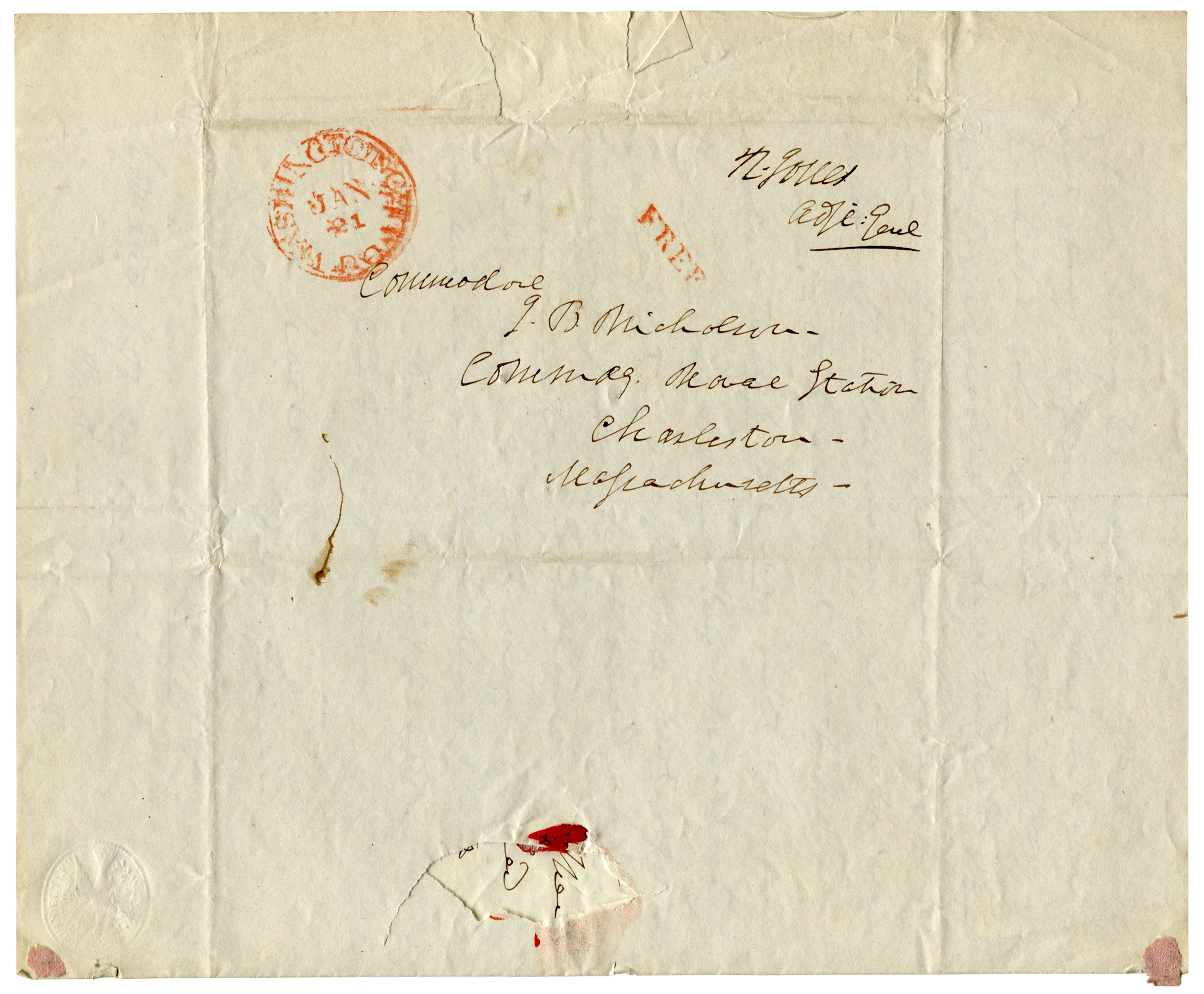 Commodore John B. NICHOLSON (1783-1846) accompanied Commodore Oliver Hazard Perry on the 1819 Venezuela Expedition, after with Perry died from yellow fever. He commanded the USS United States from 1832 to 1834 as part of Commodore Patterson’s Mediterranean Squadron, and commanded the Brazil Squadron aboard the flagship USS Independence from 1837 to 1839. In 1840, he was accused by a large group of sailors formerly under his command of having lied to them regarding their duration of service to procure the men for the Brazil Squadron. He served on the Board of Navy Commissioners from 1840 to 1841.
Commodore John B. NICHOLSON (1783-1846) accompanied Commodore Oliver Hazard Perry on the 1819 Venezuela Expedition, after with Perry died from yellow fever. He commanded the USS United States from 1832 to 1834 as part of Commodore Patterson’s Mediterranean Squadron, and commanded the Brazil Squadron aboard the flagship USS Independence from 1837 to 1839. In 1840, he was accused by a large group of sailors formerly under his command of having lied to them regarding their duration of service to procure the men for the Brazil Squadron. He served on the Board of Navy Commissioners from 1840 to 1841.
Minor edge wear, light marginal toning, usual folds, paper loss to verso from wax seal not affecting content, overall fine condition.
(EXA 5736) SOLD
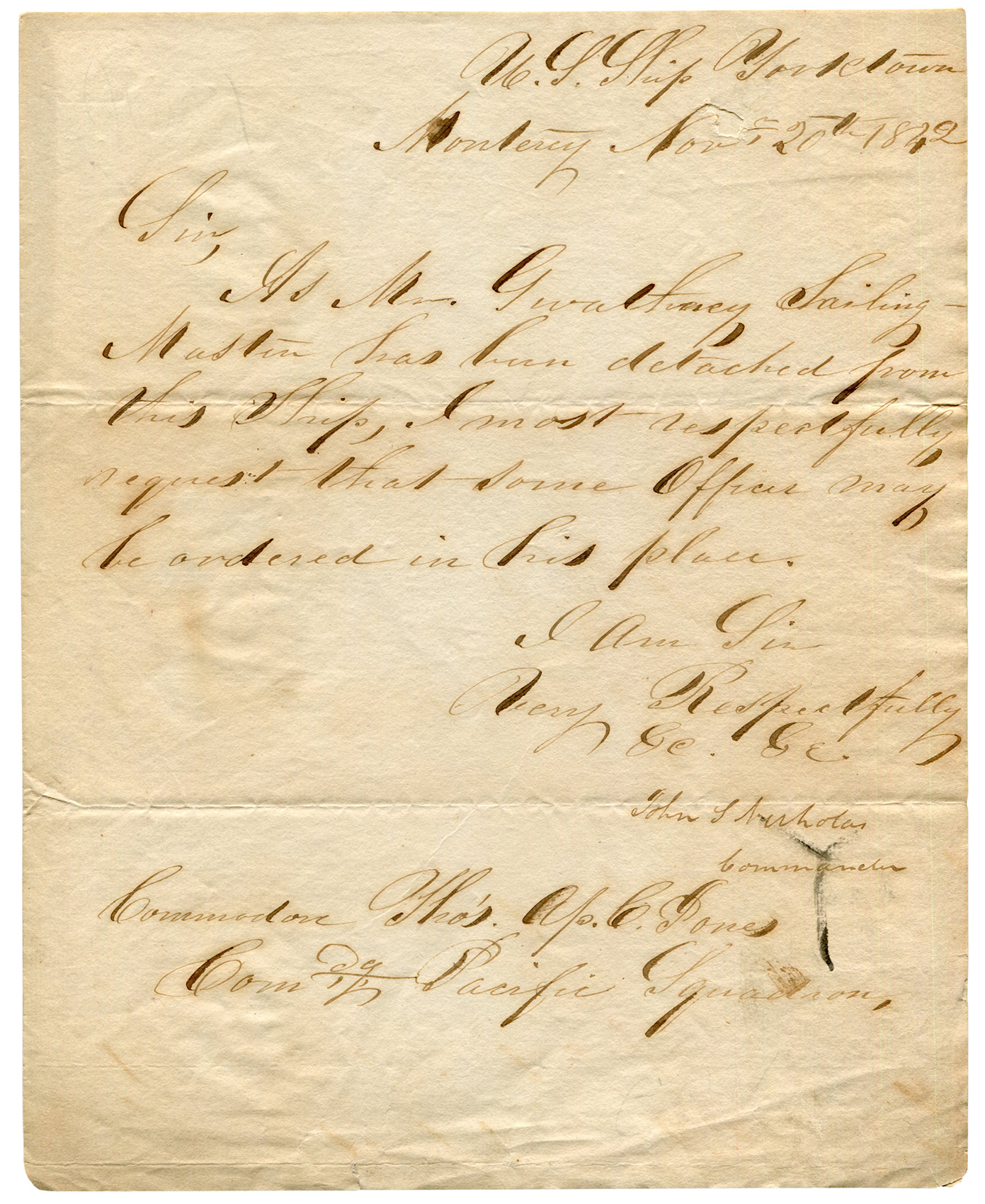 (California) Letter Signed “John S. Nicholas” as Commander of the USS Yorktown, 1 page, 252 x 203 mm. (10 x 8 in.), Monterey, 20 November 1842, to Commodore Thomas ap Catesby Jones* commanding the Pacific Squadron requesting a new ship’s Master, in full: “As Mr. Gwaltney, Sailing Master has been detached from this Ship, I most respectfully request that some Officer may be ordered in his place.”
(California) Letter Signed “John S. Nicholas” as Commander of the USS Yorktown, 1 page, 252 x 203 mm. (10 x 8 in.), Monterey, 20 November 1842, to Commodore Thomas ap Catesby Jones* commanding the Pacific Squadron requesting a new ship’s Master, in full: “As Mr. Gwaltney, Sailing Master has been detached from this Ship, I most respectfully request that some Officer may be ordered in his place.”